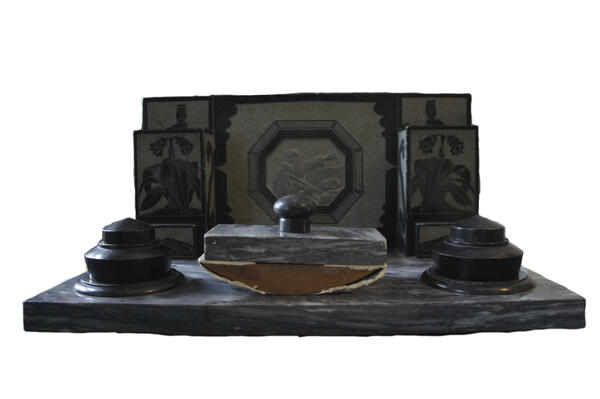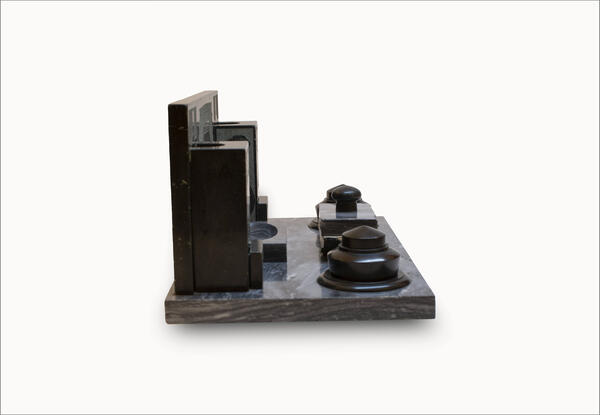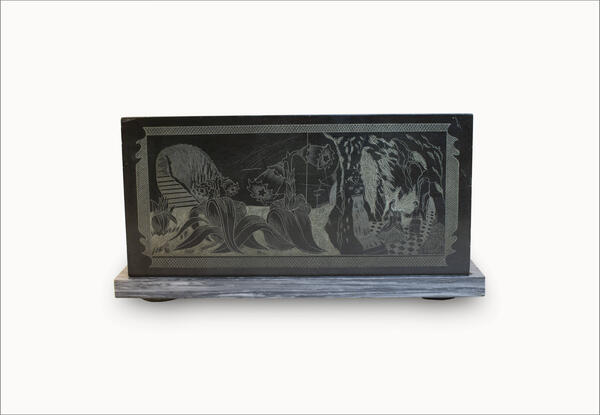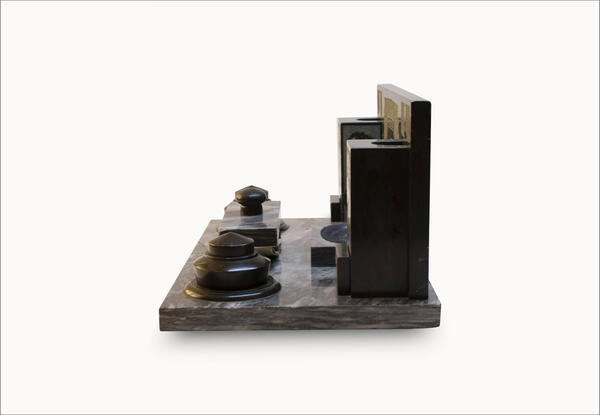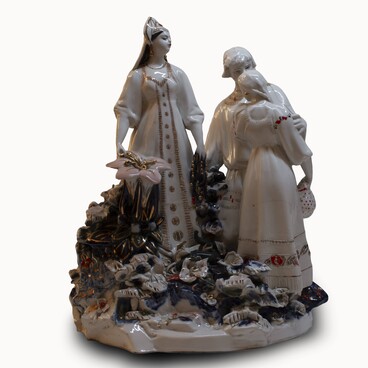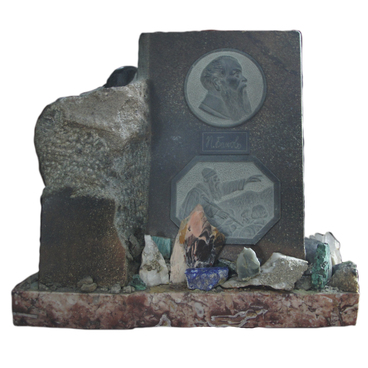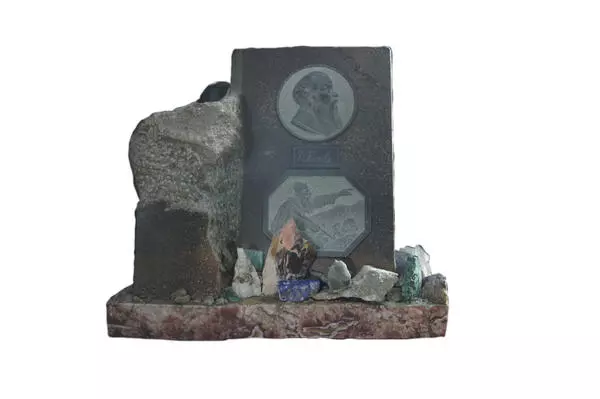Most of the exhibits of the Pavel Bazhov House-Museum are gifts presented to the writer from fans of his work, various organizations, colleagues or friends in connection with different dates. Among them, stone souvenirs by Karp Sergeyevich Averkiev are quite special.
Averkiev was born in the village of Mramorskoye (Polevskoy District, Sverdlovsk Oblast) in the late 19th century. His grandfather worked at the Gornoshchitsky Marble Factory from the age of 17, and his father lived and worked in Mramorskoye and was a handicraftsman.
Like his grandfather, Karp Averkiev started working at 17, and like his father, he was engaged in handicraft production, as well as teaching at a vocational school in his village. After the Second World War, Karp Sergeyevich moved to Sverdlovsk, where he often met Pavel Bazhov, working at the “Russkie Samotsvety” (“Russian Gems”) factory. In the late 1950s, he returned to his native Mramorskoye, but continued to collaborate with the factory. Models of sculptures created by Averkiev were made at Sverdlovsk, Kungur, and Krasny Yasyl enterprises.
Averkiev was one of the first stone-cutters, and generally, craftsmen of decorative and applied arts, who turned to the imagery of Bazhov’s fabulous plots and characters. This was largely due to the fact that both Ural natives, Averkiev and Bazhov, grew up at local factories. In addition, the stone-cutter himself was one of those masters whose work is described in Bazhov’s writings.
Karp Sergeyevich’s favorite stones were marble and serpentine. Ural marble is famous for its light shades, and sometimes a pure white color — with a translucent sugary texture. As the famous Carrara marble from Italy, it has veining of delicate colors on its surface.
Serpentine is a decorative stone of yellowish and greenish shades with black spots and stripes. Its coloring resembles the skin of reptiles, hence the name. This dense rock has a fibrous habit: after special treatment it can split into fibers.
The ink set standing on Bazhov’s desk was made of these stones: the base, ashtray and rocket blotter are marble, and the rest items, including the rocket blotter handle, are serpentine. Functionally, the inkstand consists of a rocket blotter, two cups, small drawers for miscellaneous things under them, and two inkwells. The back wall features a cut-out scene: Grandpa Slyshko tells stories to children. The cups depict relief Stone flowers, above them on both sides are owls, and the drawers feature lizards. From the inside rises the Great Snake. All carvings were made using the contrast of light and dark shades.
Averkiev was born in the village of Mramorskoye (Polevskoy District, Sverdlovsk Oblast) in the late 19th century. His grandfather worked at the Gornoshchitsky Marble Factory from the age of 17, and his father lived and worked in Mramorskoye and was a handicraftsman.
Like his grandfather, Karp Averkiev started working at 17, and like his father, he was engaged in handicraft production, as well as teaching at a vocational school in his village. After the Second World War, Karp Sergeyevich moved to Sverdlovsk, where he often met Pavel Bazhov, working at the “Russkie Samotsvety” (“Russian Gems”) factory. In the late 1950s, he returned to his native Mramorskoye, but continued to collaborate with the factory. Models of sculptures created by Averkiev were made at Sverdlovsk, Kungur, and Krasny Yasyl enterprises.
Averkiev was one of the first stone-cutters, and generally, craftsmen of decorative and applied arts, who turned to the imagery of Bazhov’s fabulous plots and characters. This was largely due to the fact that both Ural natives, Averkiev and Bazhov, grew up at local factories. In addition, the stone-cutter himself was one of those masters whose work is described in Bazhov’s writings.
Karp Sergeyevich’s favorite stones were marble and serpentine. Ural marble is famous for its light shades, and sometimes a pure white color — with a translucent sugary texture. As the famous Carrara marble from Italy, it has veining of delicate colors on its surface.
Serpentine is a decorative stone of yellowish and greenish shades with black spots and stripes. Its coloring resembles the skin of reptiles, hence the name. This dense rock has a fibrous habit: after special treatment it can split into fibers.
The ink set standing on Bazhov’s desk was made of these stones: the base, ashtray and rocket blotter are marble, and the rest items, including the rocket blotter handle, are serpentine. Functionally, the inkstand consists of a rocket blotter, two cups, small drawers for miscellaneous things under them, and two inkwells. The back wall features a cut-out scene: Grandpa Slyshko tells stories to children. The cups depict relief Stone flowers, above them on both sides are owls, and the drawers feature lizards. From the inside rises the Great Snake. All carvings were made using the contrast of light and dark shades.

